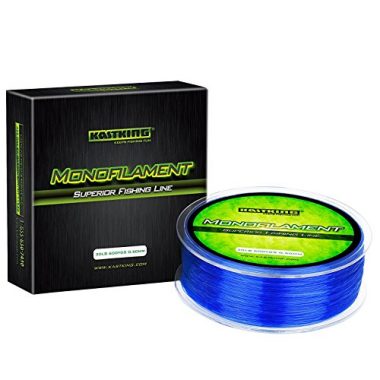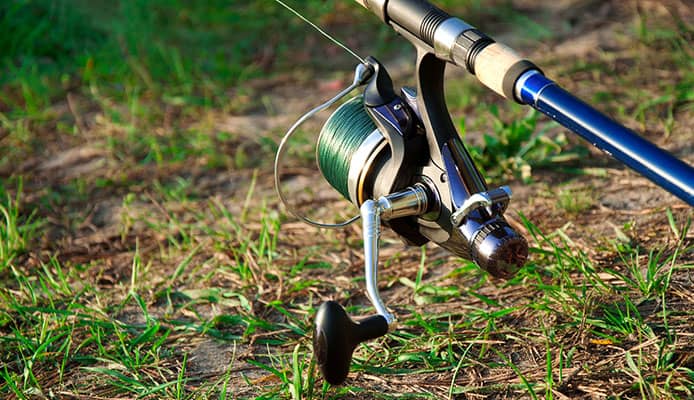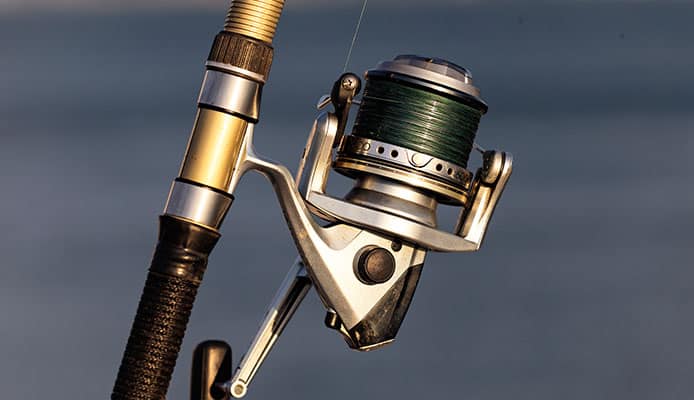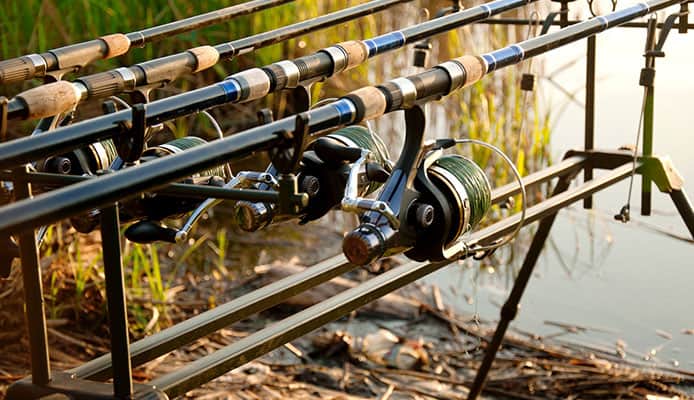
The monofilament line is a popular choice when it comes to fishing. The line has a high amount of sensitivity while still being very tough. There are plenty of different products out there on the market, so finding the best monofilament line can be difficult!
When it comes to finding the best mono line, there are a lot of things to consider, such as the diameter of the line, as well as its strength. Then, there are other aspects to think about, such as color, sink rate, memory, and abrasion resistance, among others.
In this guide, we’ll break down the different features so you will know exactly what you are looking for. In order to show you the best products on the market, we have also completed monofilament line reviews too. Once you’ve read through this guide, you’ll have a clear picture of exactly what you need!
EDITORS CHOICE
Stren High Impact
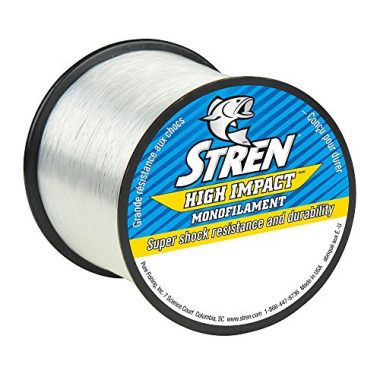
- Stand Out Features - Why We Love It
- Great color range
- Shock resistant
- Ideal for saltwater fishing
BEST VALUE
South Bend
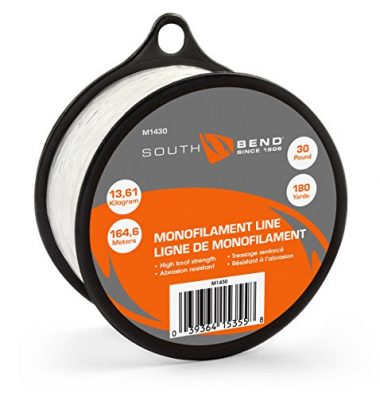
- Stand Out Features - Why We Love It
- Various buying options
- High knot strength
- Abrasion-resistant
KastKing DuraBlend
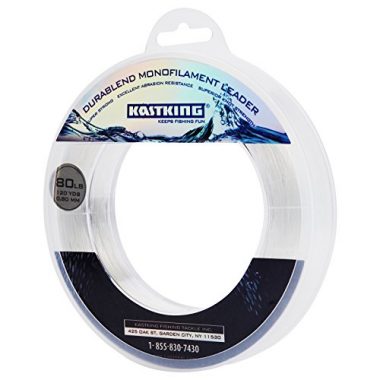
- Stand Out Features - Why We Love It
- High strength
- Narrow diameter
- Leader line
Berkley Trilene Big Game
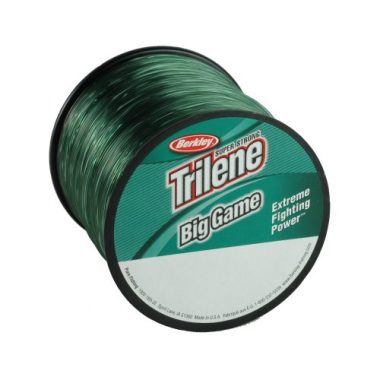
- Stand Out Features - Why We Love It
- Extremely strong line
- Ideal for big game fish
- A wide variety of colors
Berkley Trilene XL
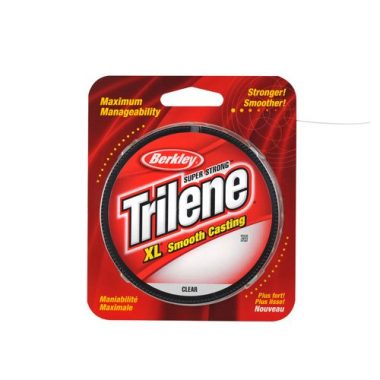
- Stand Out Features - Why We Love It
- Allows for smooth casting
- Highly rated
- Gives a great level of control
Hi-Seas Grand Slam
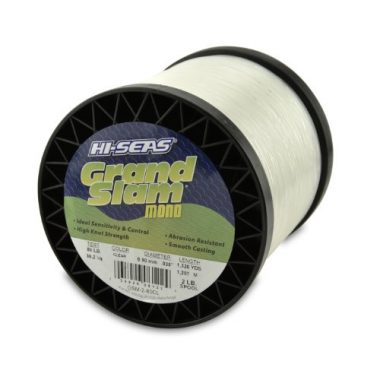
- Stand Out Features - Why We Love It
- Sensitivity and control
- Smooth casting
- Versatile line
Stren Catfish Monofilament
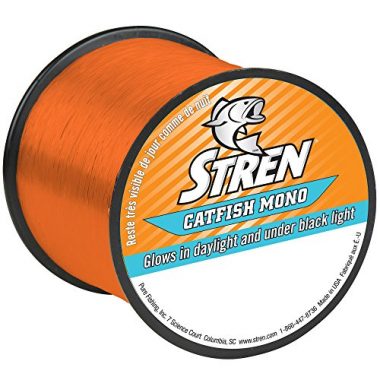
- Stand Out Features - Why We Love It
- Designed for catfish
- Resists abrasion
- Glows in daylight
SpiderWire Ultracast Ultimate
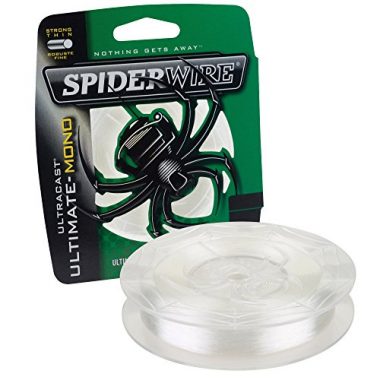
- Stand Out Features - Why We Love It
- A large amount of strength
- Thin profile
- Designed for baitcast reels
KastKing Masters Tournament Grade
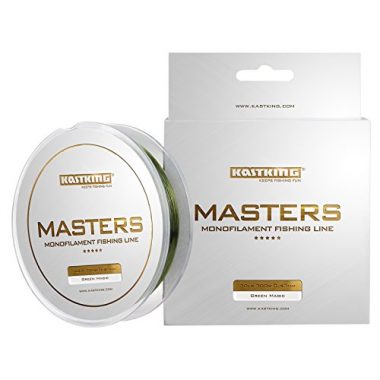
- Stand Out Features - Why We Love It
- A range of vivid colors
- Minimal line memory
- High abrasion resistance
How To Choose A Monofilament Line – Buying Guide
Strength
The strength of a line is measured by the number of pounds that the line will be able to hold from the ground. This is a good way of having a standard strength which can be measured against each line regardless of the type that it is and the diameter that it has.
Not all lines are built the same and if you are trying to catch big fish then you want to be able to keep them on the line by having a line which can take their weight. You need to match the pound rating to the weight of the fish you want to catch. If in doubt, it is best to be cautious and go for a higher weight.
Easy to Use
There are a number of features which make the monofilament line easy to use and a great line for your fishing trip. One of those key features is the decreased visibility of the line, as the monofilament line can look almost invisible when it is sitting in the water.
There is also the fact that the monofilament line makes easy-to-tie knots, which are not only easy to tie but also hold a high amount of weight. Monofilament lines also hold a high amount of stretch in their lines which can take the pressure off your line and your knots, making it easier to reel in your catch.
Sink Rate
The sink rate required for a line is dependent on the type of fishing that you do and if you have a heavier lure then it’s not going to be much of an issue either way. Monoline tends to have a slow sink rate which makes it a great choice when casting out topwater lures.
The sink rate of the monofilament line also makes it good for suspended subsurface presentations when the downward movement of the bait doesn’t need to be accelerated. Monofilament line is usually neutrally buoyant which is important to bear in mind when buying the line.
Color
The color of your monofilament line is important depending on the location of where you are going to be fishing as you generally want to match up the line to the color of the water and the surrounding areas. In clear water, clear and blue lines are the most common as these are more likely to appear invisible.
Other lines are able to glow when they are out of the water for greater viability and there are other aspects to consider such as the fact that red lines start to appear black the further it goes into that water. You need to match your fishing trip to the color of the line required.
Knot Strength
Knot tying is obviously an important part of a line as it needs to be flexible enough to be easy to tie but it also needs to hold strong when it does and not slip out. This is an important part of any line and monofilament does a very good job of this.
There is no specific test for this and each company seems to make the claim that their product has a high amount of knot strength. This is one area where looking at the user reviews can be very useful in determining how strong a product’s knot will be.
Diameter
One of the great features about fishing lines is their ability to have a very high amount of strength while still being able to have the smallest diameter possible. The diameter of a line often relates to its strength but not all companies are the same and the same diameter may be different strengths with different lines.
In respect of diameter, it’s simply a case of the smaller the better as the thinner diameter would mean that it’s harder for fish to see. A balance has to be struck here though as you want to ensure the line is strong enough for the fish you want to catch.
You might also like: Top Fishing Lines
Memory
When it comes to memory, if something has a high memory then it remembers the shape that it was put in, such as a paperclip would stay in its shape when stretched out. That would obviously be terrible for a fishing line as a high memory would mean that it stays curled around the spool.
This means that you want a fishing line which has the lowest memory possible so that it will stay straight and true when you are trying to cast it and use the line. You want to use a product which promises a low memory and this is another area where it’s good to check the reviews.
Abrasion Resistance
The abrasion resistance required from a line can depend on where you are casting out your line and what types of lures you are using. Topwater lures, for example, aren’t going to get a lot of exposure to rubbing on rocks or anything else which can cause abrasion.
Having a large amount of abrasion resistance though can be very useful as a fish’s bite can damage a line. If you are casting out a line for an aggressive fish in shallower waters then you will want to ensure that you’re getting a product which has a high level of strength.
Suppleness
You want a line to be flexible and supple as this will be able to help you send out a smooth cast and also help your lure to travel over longer distances for those that are aiming to cast a long way into the water from the shore.
A lot of freshwater fishing doesn’t require a hugely long cast but the smoothness of a supple line will still be able to give you a high degree of accuracy. Having a line which promises a smooth cast will always give you an advantage.
FAQs
Q: What Is The Difference Between A Regular Fishing Line and Monofilament Line?
There are three main types of line which are monofilament, braided and fluorocarbon. Where monofilament excels is in the stretch, visibility, memory, and the cost. It is also seen as a line which is very easy to work with, which makes it attractive to many users.
Monofilament line often has a thicker diameter than the other two types, but that is balanced by the fact that it is hard to see. Braided line can generally be cast further and has a lower memory, whereas fluorocarbon is better for visibility but can cost a lot more.
Related Review: Fluorocarbon LineQ: What Is The Best Way To Use A Monofilament Line?
One of the great aspects of a monofilament line is the fact that it can be used with almost all setups which makes it a very versatile line and one which is very popular among many anglers in many situations.
Even though it can be cast fairly far, monofilament line is not able to be cast as long as others and it’s not the best when the water clarity is murky. But even in these circumstances, it is a line which is able to perform and can be used in many different fishing spots and conditions.
Q: How Often Should You Replace Mono Line?
The number of times that you need to replace your line can obviously depend on the number of times you are using it. If you fish a few times a week then you are going to have to replace it a lot sooner than someone who uses their line once a fortnight, for example.
The reason that you need to change a line is due to the fact that stress cracks and abrasions can appear over time. It’s important to inspect your line and replace it at any sign of significant wear which will probably be about once or twice a year.
Globo Surf Overview
When you are out there fishing monofilament line can give you great success due to the qualities that it has. The strongest monofilament fishing line will give you a large amount of stretch, which will make it easier to reel in your bite, while also being barely visible in the water.
In addition, when it comes to your fishing line, monofilament is the easiest to work with in terms of being pliable and able to tie knots which is also helped by the fact that the line has a low memory, making casting it fairly easy.
The sink rate of monofilament fishing line is low as it has neutral buoyancy which makes it ideal for many types of fishing. With the top-rated mono line, you want to look out for products which have a high amount of knot strength and abrasion resistance and the user reviews are a great place to check this out.
Once you have made sure that your line has all those qualities then all you then need to do is choose a color which is going to match the environment you’ll be fishing in and head out to the water to enjoy your new line. Hopefully, this guide has given you the confidence to know that the best monofilament lines requires so you can choose the perfect product for you.



